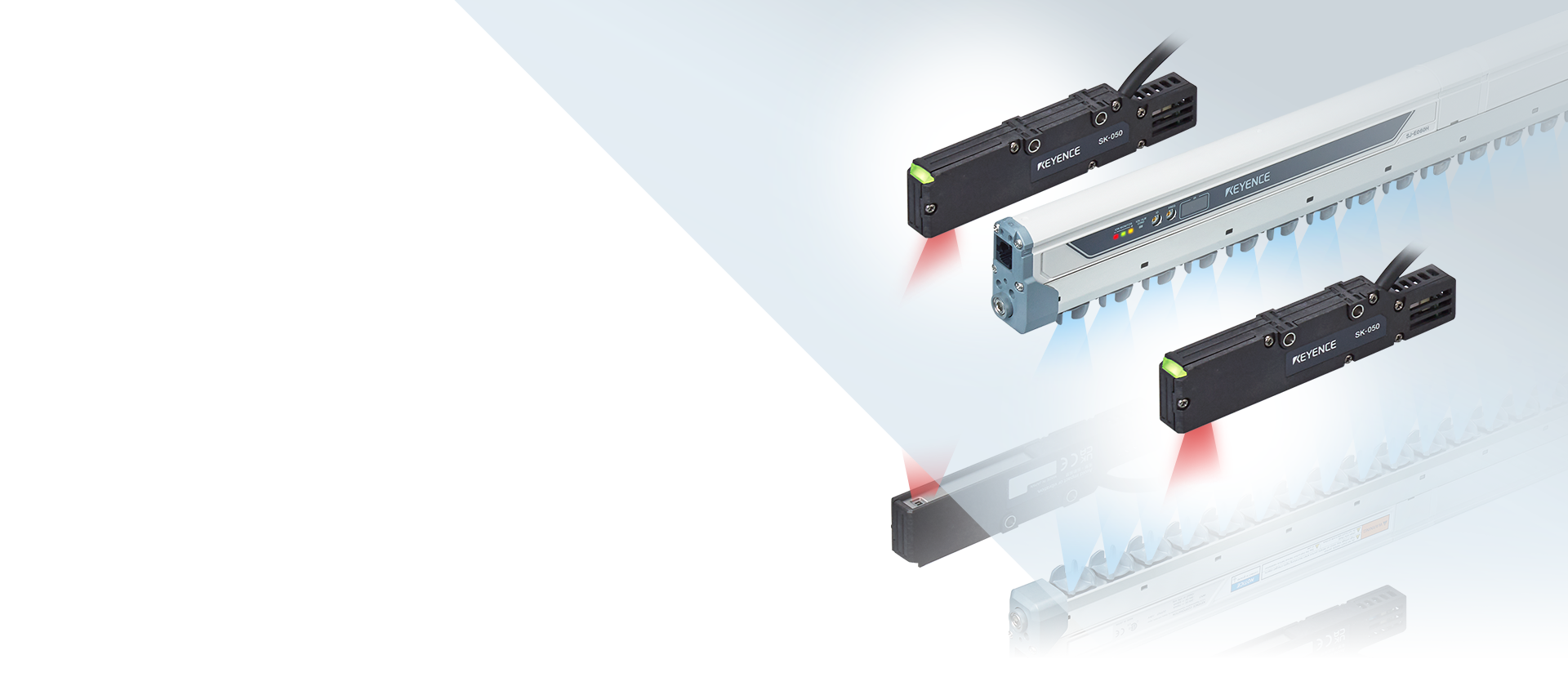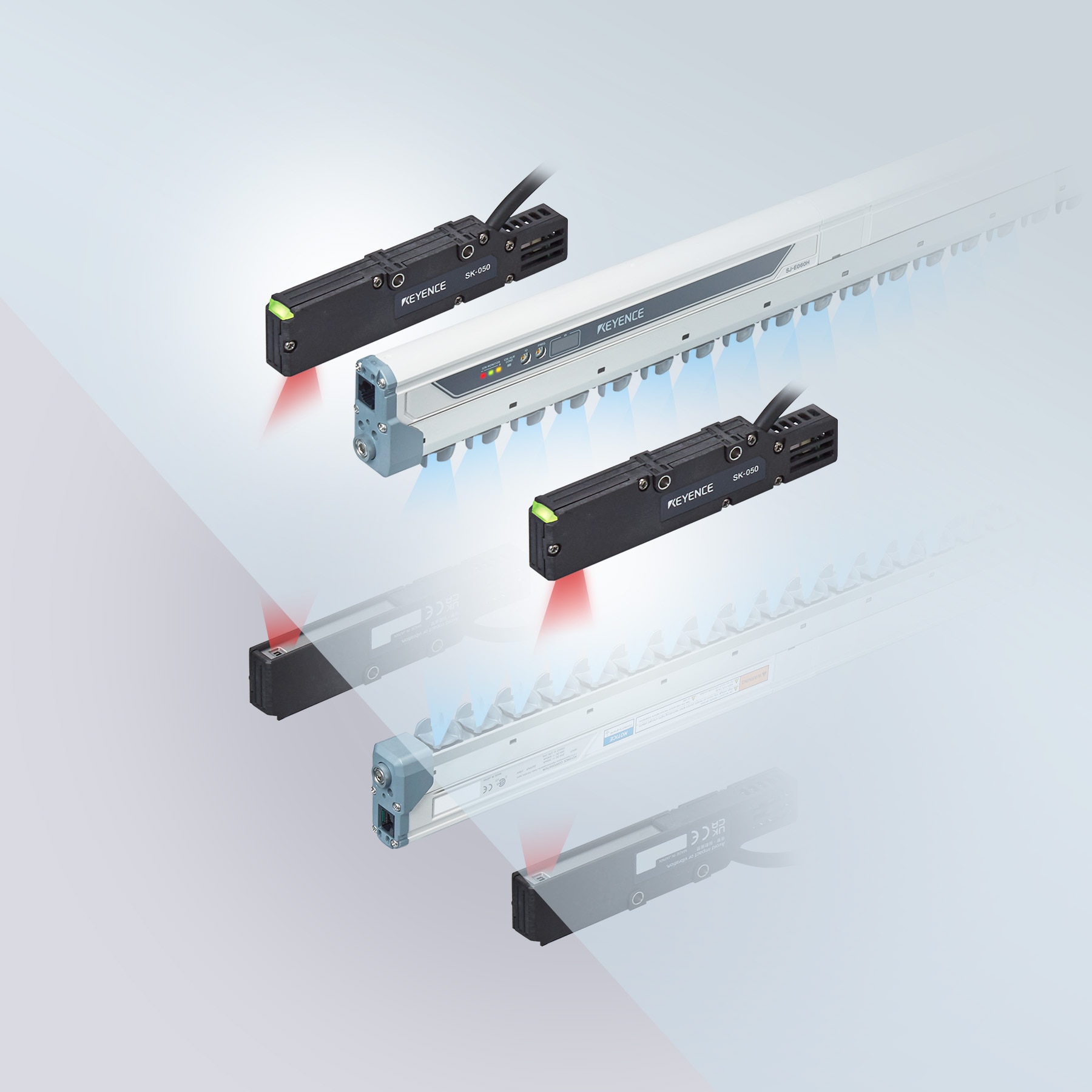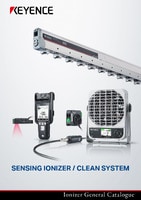
Inline Electrostatic Sensor
SK series
-
Simultaneous inline measurement of static electricity, temperature, and humidity
-
Supports switching between high-accuracy mode and wide-range mode
-
Easily provides visibility on various communication networks
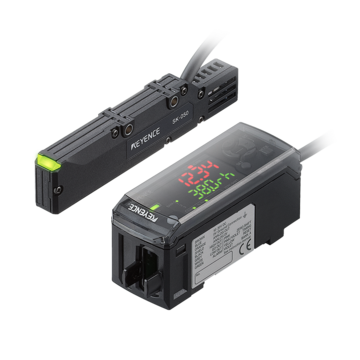
The major advantage of inline electrostatic sensors is that they can be installed in manufacturing lines, allowing for continuous real-time measurement of the electrostatic charge of targets. Conventional temporary measurement cannot detect problems caused by static electricity. One such example of these problems is a decrease in yield rate. However, real-time monitoring makes it possible to prevent these problems, contributing to improved manufacturing efficiency. This sensor can also improve quality management and traceability using measurement data, allowing it to respond to the advanced needs of manufacturing sites.
Features
Reasons Why Real-Time Monitoring of Target Electrostatic Charge is Required
Entry-level hand-held types are often chosen as the first tool for quantifying static electricity. Although capturing general trend values is possible with these sensors, monitoring conditions such as high-speed moving targets, environmental changes between morning and evening, or abnormalities during setup changes is more difficult. Even if inspections during equipment installation or maintenance pass, there are an increasing number of cases where yield issues—likely caused by static electricity—do not improve. Real-time measurement can dramatically enhance manufacturing efficiency for advanced devices.
Before
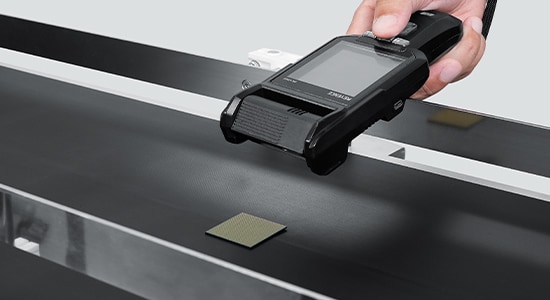
General trend value management with a hand-held measuring instrument
After
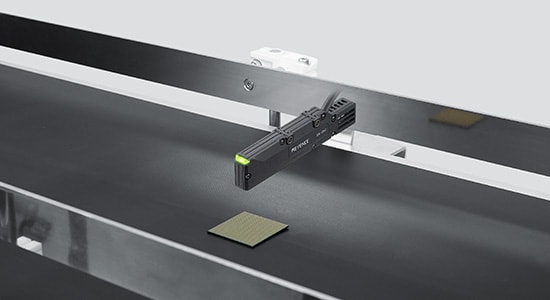
Continuous measurement with an inline measuring instrument
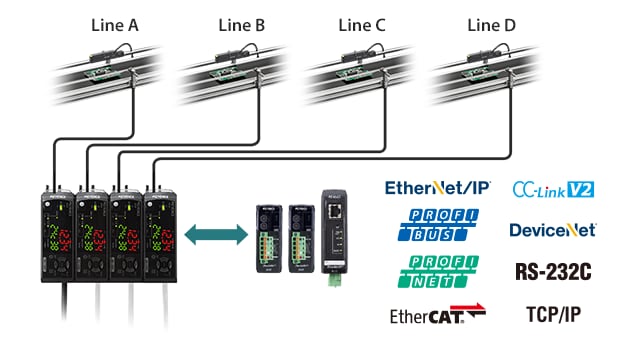
Easily Provides Visibility of Collected Data on Various Communication Networks
Standard specifications include an independent 3-output judgement system and analogue voltage/current output to collect and output the static electricity volume of the target as well as the temperature and humidity data of the surrounding area. By using a communication unit, data from up to 8 connected main units and expansion units can be transmitted simultaneously. The ability to read data and re-write settings from PCs and PLCs contributes to a significant reduction in man-hours required for setup and operation.
Real-Time Monitoring of the On-Site Static Electricity Volume, Temperature, and Humidity
Simply connect the SK Series to also monitor the amount of electrostatic charge on the target surface and the ion balance of the ionizer.
Install the SK-050 sensor in front of and behind the ionizer to save the effects of static elimination—which can vary depending on target and environment—in chronological order to a PC. This is useful for verification during installation, changeover, and periodic inspections.
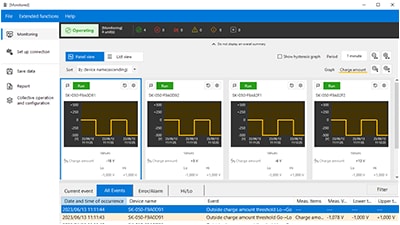
Checking the electrostatic charge of the target
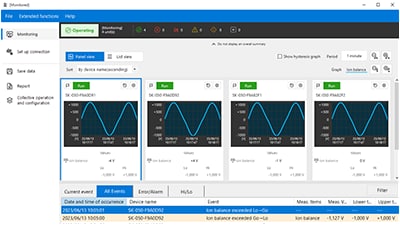
Checking the ion balance of the ionizer
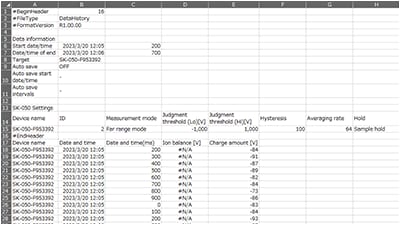
Outputting data to CSV

